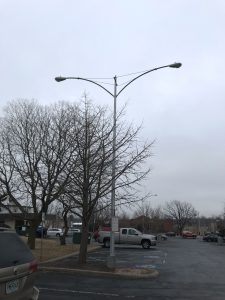Cities are on the brink of a design overhaul and best practices in look and feel of streets and transportation networks is still undecided. The future is autonomous, and as there is no real set of comprehensive precedents to follow, urban designers and planners are tasked with attempting to imagine design priorities. As we look back in time and observe lighting elements that have been put in place in the past, one can’t help but notice the lack of attention to the human scale. Lighting elements were largely considered a way to provide broad nighttime visibility for automobiles or a method for enhanced security as people walked to and from their parked car and their ultimate destination.

Newly implemented development and urban design seems to be gearing up for increased pedestrian traffic and more human-scaled design. Lighting is not only smaller in scale and generally more aesthetically pleasing, but much more thought is being put toward pedestrians and safety while traveling on foot. Downward facing sidewalk and street lights along with pathway lighting enhance the visual walking experience as well as provide a sense of safety for pedestrians. Additionally, it seems as though all new design is ADA-compliant, giving new urban design an even deeper commitment to the human scale.

As for the future of urban lighting, it is easy to assume that the pedestrian will take precedence. As autonomous vehicles begin to dominate the roads, there won’t be a need for as much street lighting as the automobiles’ ability to see will be based on sensors, not eyes. The world will continue to become more urbanized, and a rich mix of urban lighting will be needed to cover the varying forms of transportation.
